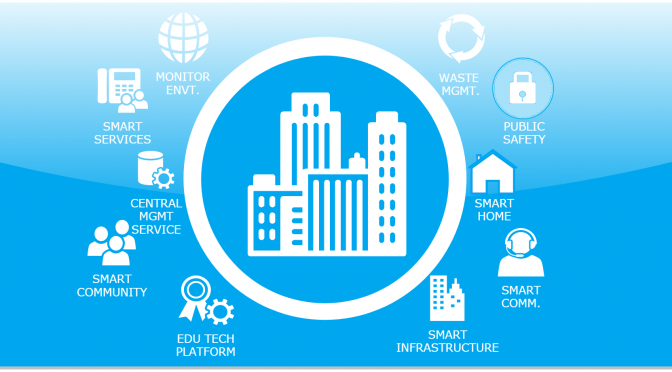The Internet of Things (IoT) is a developing technology which envisions a future of objects of everyday life able to communicate with the internet. These are equipped with microcontrollers, sensors, actuators, transceivers and suitable protocol stacks. These devices collect information that they have gathered and report it to a remote server. Based on the information, the server takes decisions. These decisions are sent to and carried out by actuators. It is an inclusion of a high degree of information technology integration and a comprehensive application of information resources. As it is a system that can take decisions without human intervention, it is termed “smart”. These IoT applications for smart cities help in better governance and improved city life for the residents.
The technology features instrumentation, interconnection and intelligence to make automated decisions based on the information collected. When this “smart” technology is applied to collect different parameters in a city, the system is called “Smart City”. This integration includes all walks of a city life, like, government, schools, education, hospitals, tourism, infrastructure, energy, people, law enforcement, resources and business.
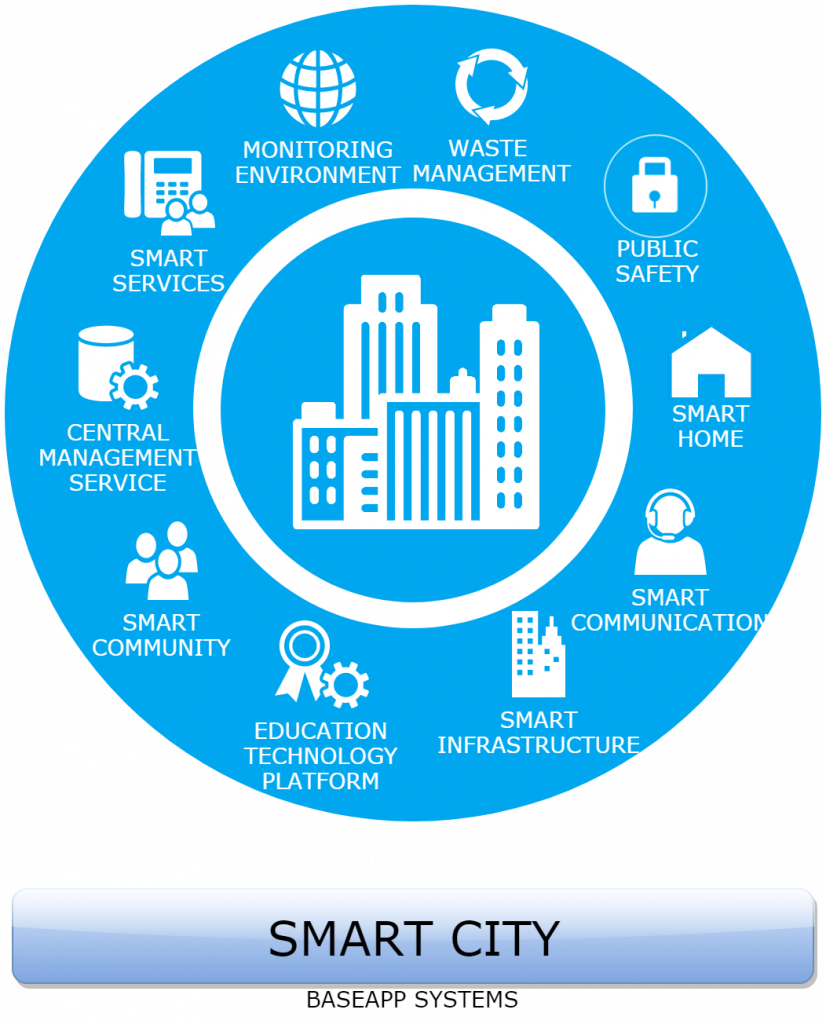
CONCEPT OF IOT
Internet of things [IoT] made remote control and automation possible. This led to the idea of automation of homes and offices based on preset rules. Automation further dripped down into the manufacturing plants and production sites. If these are done, why not monitor and automate a bigger area, like a city? Sound far-fetched? No! This is exactly what governments around the world have started striving for… SMART CITY.
The concept of Smart City does not have a globally accepted definition. It may differ from country to country, government to government, place to place, and people to people. Depending upon the current development of the place, future expectations of the population and the willingness to adapt to the changes, the idea of Smart City may vary. Thus, people from different places will have different idea and aspiration about the concept. But we can say that the concept should have digital technology embedded in the city functionalities. This will enable the city to centrally manage its assets, optimize its functions and drive economic growth.
The Smart City concept can have short-term and long-term goals. Thus, it will take a considerable amount of time to implement it as a whole. We can divide the task into different sectors, to be achieved in different layers: economic, physical, social and institutional infrastructure. Sustainable growth of all these sectors ensures an overall growth of the city.
A smart city will not only help its residents but also attract more people, and tourists. It will also attract investments as a business, infrastructure and ease of living and doing business. This puts the city on a global scale, maybe a role model for other cities to follow. Encouraging its culture, local cuisine, economic activity, arts and craft can further boost the growth of the city giving it a special identity on a global scale.
IoT SOLUTIONS
The application of Internet of Things [IoT] for enabling a city to be “smart” has solutions to a lot of the problems that we face today. Upliftment of the people is the primary objective of all social activities. Enabling a city to be smart, in all aspects, accelerates the process of making its citizens smart. It helps in empowering them to contribute to and solve the problems that they face in their life. Some of the fields where we can implement the technology to make a city smart are:
Smart Services
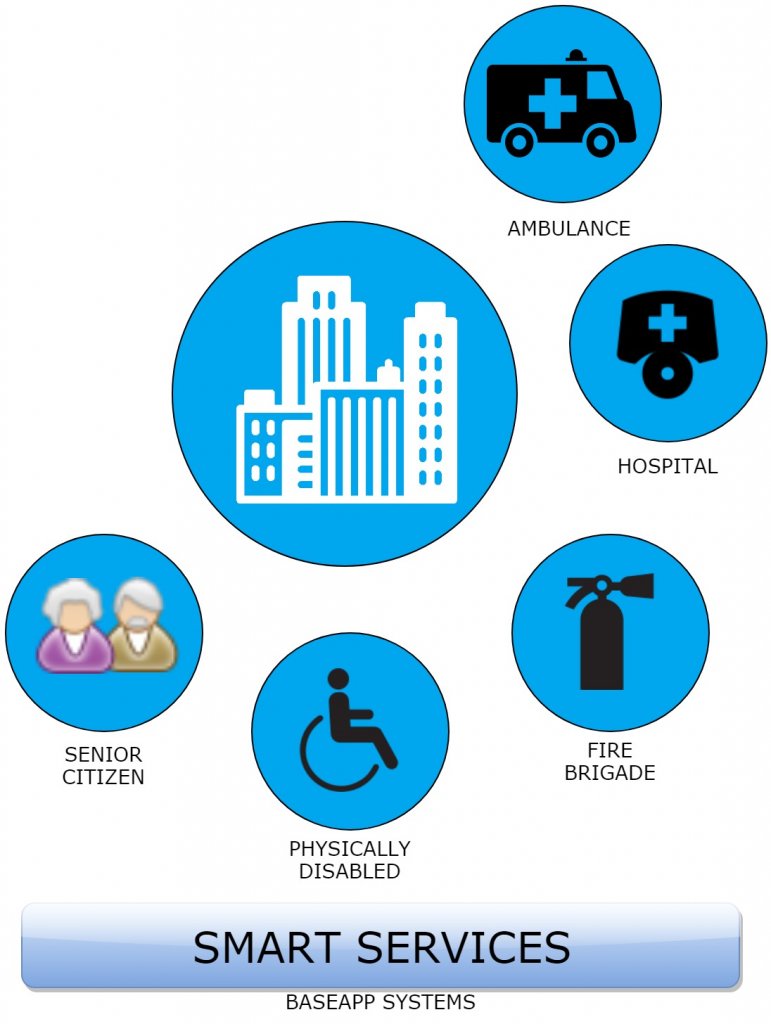
- Emergency services, such as that of ambulance and fire brigade, are time critical in operation and thus the response needs to be swift. A managing and monitoring system can facilitate this swift response.
- Connected emergency vehicles help responders get help to citizens faster.
- The emergency services can be availed very quickly with the help of public safety applications.
- If the system has access to live traffic congestion, list of hospitals or fire stations nearby and the best route to reach the destination, the emergency services can be provided quickly and efficiently.
- By communication and coordination between different departments, the efficiency of the law enforcement unit to respond to critical and emergency situations is increased.
- Services to differently abled citizens and senior citizens can be boosted.
Smart Security
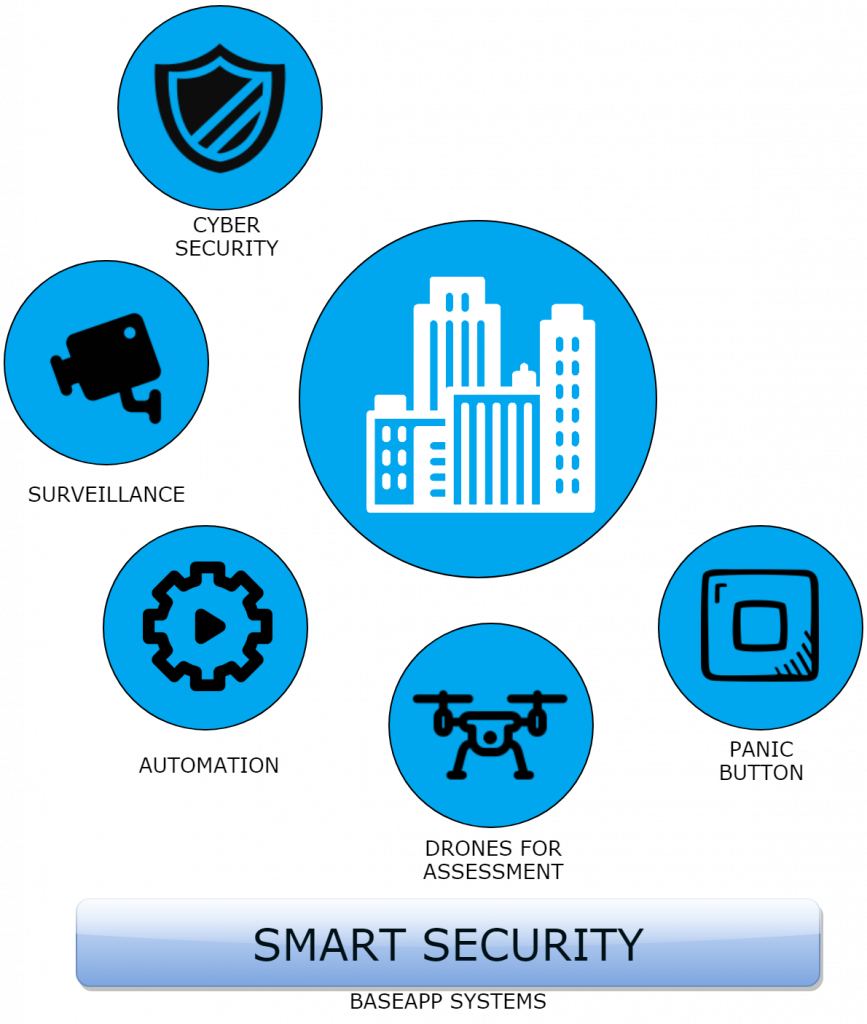
- In this cyber age, the security of the data in the web is at risk. We must build smart security for the protection of networks, computers, programs and data. This prevents an attack, damage or unauthorized access enabling netizens to use the web without any fears.
- Video surveillance in a city offers deeper insight into the vehicle and pedestrian flow and traffic.
- Continues surveillance of public places ensures reduction of theft, loss and vandalism in public places. It can help in tracking and reduce crime.
- Surveillance also makes sure that women and children are safe in crowded places.
- Automation of common, time-consuming activities can reduce time and cost. This is true in case of issuing tickets and controlling gates in parking areas and toll booths.
- Automating monitoring of video surveillance can create quick response calls compared to manual ones.
- Using drones for assessing damages will decrease time and effort, thereby generating a quick report and fast response. It is crucial in situations such as natural calamities where the area to be covered is huge or inaccessible.
- Panic buttons enhance the safety of women and children, especially when they are alone.
- Smart security monitors at homes can make the home safe even when the place is not inhabited.
Smart Infrastructure: Transportation and Traffic Management
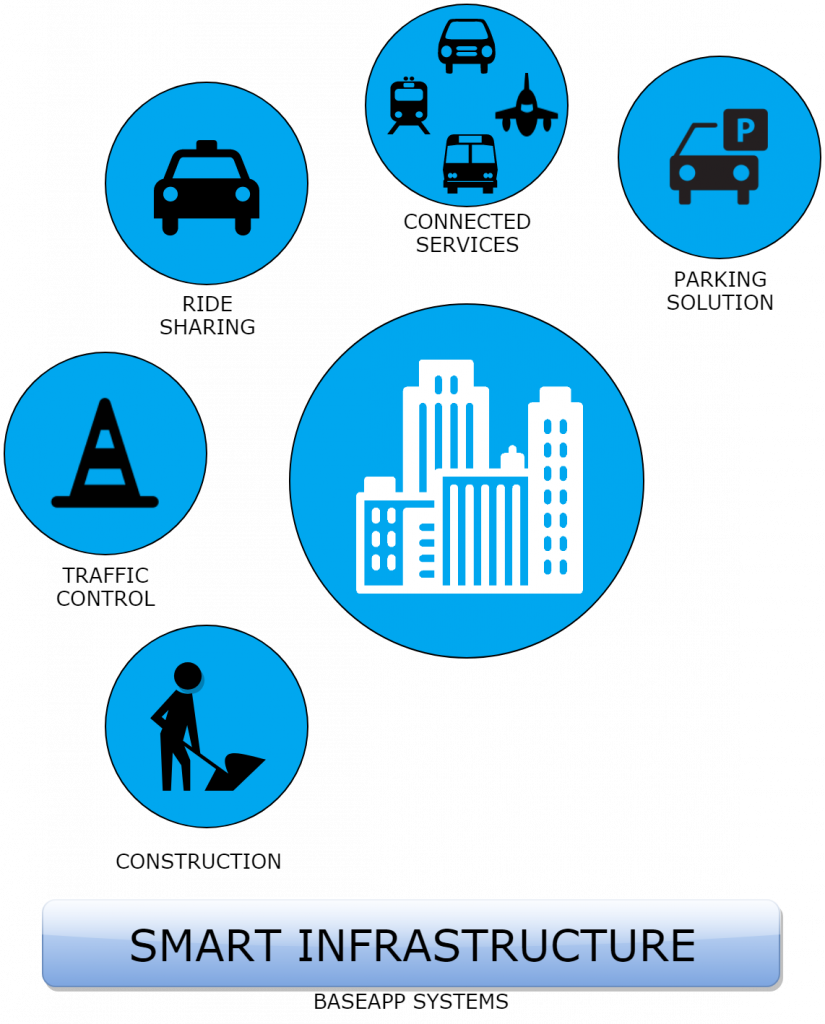
- Connecting the different modes of transportation such as trains, buses and vehicle fleets helps cities improve efficiency and safety, and deliver better services. When a train arrives, having a bus ready to ferry the crowd from a railway station is a good example of managing crowd in public places. This can be implemented after analyzing the flow of the crowd.
- It can facilitate reduced wait time and higher occupancy in the public transport.
- Creating a variety of transport options including the last mile para-transport connectivity.
- Synchronized and integrated multi-modal transport of goods deliver quick and efficient transportation.
- Wireless parking solutions (inside a building or on parking designated areas outside) reduce traffic congestion in busy areas. It is easier for drivers to find a parking space. It also increases the city revenues by making it easier to collect fees.
- Car-sharing and ride-sharing services reduce city traffic and carbon emissions. Online cab aggregators have already implemented a part of this. But taking it to the common masses, by knowing the requirement of the people, is the challenge. This technology allows citizens to get where they’re going without the cost and hassle of owning a car in the city.
- Cameras in the intersections can monitor the traffic movement and penalize the traffic violators. This automated system would be unbiased, quick and effective in nature.
Smart Grid
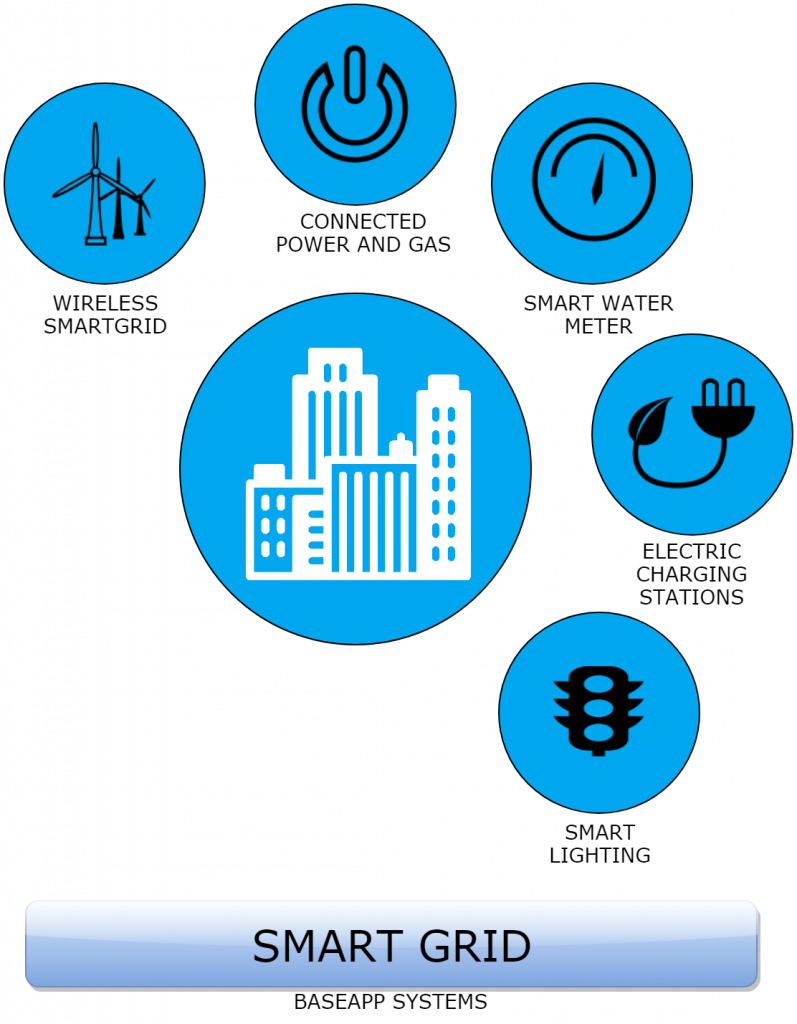
- Wireless smart grid solutions are an essential to a city for an efficient distribution network and reduced power consumption. We can have a quantitative analysis of the power consumption and distribution.
- Connected power and gas meters provide quantitative analysis of the energy consumption from the source to homes and businesses.
- Smart water meters can measure the flow of water which can pinpoint leaks and reduce theft and waste.
- Connected charging stations can make it easier for citizens to use electric vehicles - cutting carbon emissions and improving energy efficiency.
- Intelligent streetlights let cities automate and remotely adjust lighting to make streets safer. It will dramatically reduce power consumption. It can alert the authorities if one of the light is faulty, ensuring safety and reducing the maintenance costs.
- Integrating renewable sources of energy, with the ability to measure the power generated and consumed, can power the future generation.
E-Governance
- Availability of public information and grievance redressal in public portals makes the system time-bound and effective.
- Engaging the citizens in the day-to-day activities or in the decision-making body of the community can effectively bring the problems of the common man on the table.
- Electronic service delivery and its tracking.
Monitoring Environment
- The quality of the air can be monitored continuously. An alert can be issued to the public in case of a dip in the air quality.
- Curbing of sound pollution by installing wireless devices capable of measuring and reporting the intensity of sound. It will be useful, especially in sensitive areas such as hospitals and schools.
- The quality of the source of the water for the city can be measured. It ensures supply of good quality of water.
- A dip in the quality of water in a pipeline suggests a possible leak or contamination. This enables the authorities to fix the problem even before the common public reports it.
- Creating and maintaining green covers and open spaces inside and around the city and monitoring it will let the city “breathe”.
Waste Management
- Connected waste management helps cities enhance efficiency in waste collection.
- Proper planning and implementation save money and time.
- The collected waste can be segregated, reused and recycled.
- The efficient management of waste ensures emissions of less harmful gases into the atmosphere and less spreading of diseases.
Smart Home
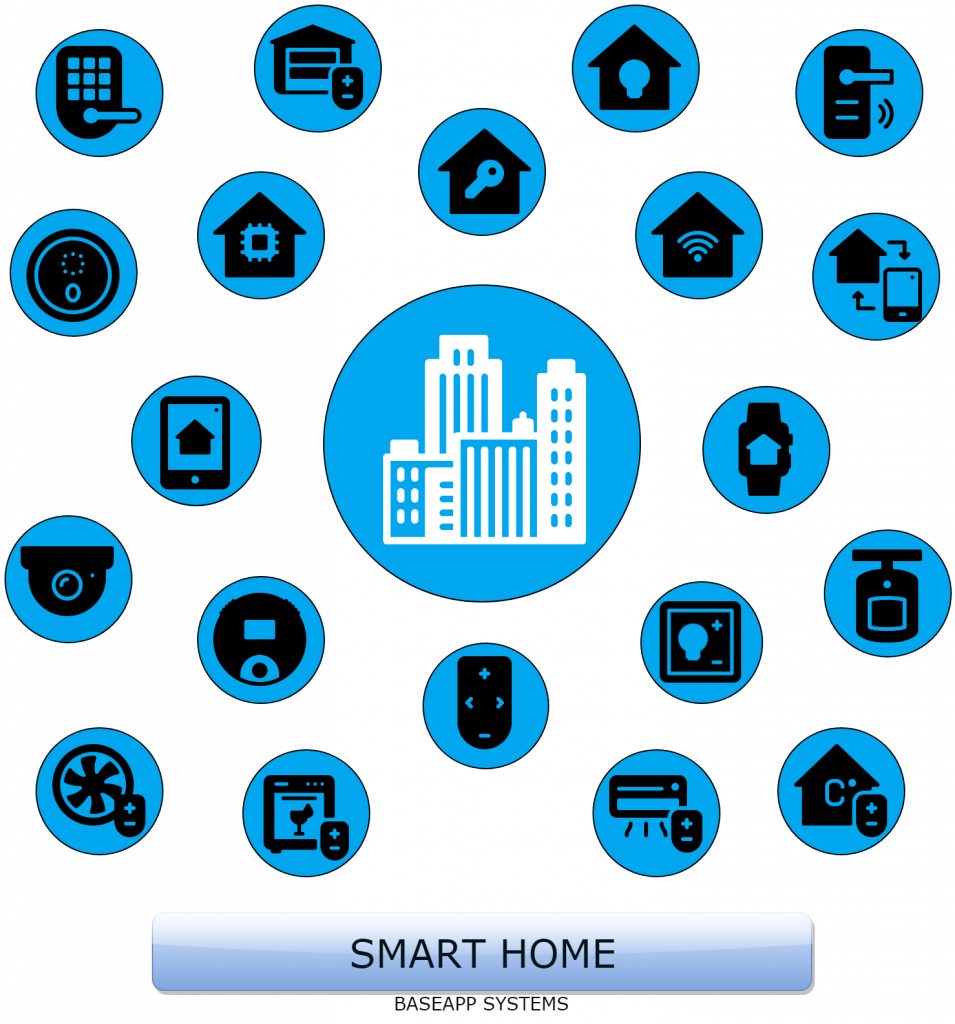
- Houses equipped with sensors and security features can alert emergency services, such as ambulance, fire brigade or police during emergency situations. This ensures a quick response, even without human intervention.
- Houses with environment monitoring sensors can remotely and automatically control things, which can dramatically reduce power consumption.
- Smart Lock feature will ensure safety and reliability along with remote monitoring. It may be enabled and disabled depending upon the location of the user too. This eliminates the traditional lock and key mechanism.
- Sensors such as PIR can detect motion and surveillance measures such cameras can enhance the security of the house drastically.
- Automated on/off control of appliances like air conditioner, refrigerator, fan and microwave oven ensures a less energy consumption and less time.
- Integration of voice controlled devices enables users to control smart devices through voice. These devices even facilitate online purchases.
ROADMAP FOR IOT APPLICATIONS FOR SMART CITIES
From city to city, people to people, the reasons for the implementation of IoT applications for Smart Cities project may vary. The expectation of the community, the interest of the society and the business aspect would be different for different cities. Thus, the implementation of Smart City for different cities may differ but the approach can be generalized.
- Understand the current development of the city and what the city needs for its growth.
- Study the community and business pattern in the city.
- Understanding the future expectations of the population and incorporating their ideas and concepts into the design.
- Finding out technologies to cater to the implementation of the ideas.
- Building a plan and/or policy regarding the Smart City.
- Brainstorm and improve the made plan and/or policy.
- Implementing it in a time-bound manner.
CHALLENGES, CONCERNS AND CRITICISMS
On the introduction of a new technology, there would be concerns and challenges associated with its implementation. Some of them are:
- Privacy of the citizens is a big concern as making a city “smart” starts with the collection of data and processing it.
- Involving the general public in such a policy democratically is challenging.
- The amount of information to be collected is soaring. Challenges related to storage, management, consistency and reliability is a big question.
- We would need more research, development and advancement in the field of technology to implement more ideas in this field.
- If there is a biased interest in the development, there can be a denial of alternative approaches.
- The cost involved is soaring. Improper implementation can effectively be negative to the city and its economy.
CONCLUSION
According to statistics, as of 2013, 50% of the world's population lives in urban areas. By 2050, it will increase to 75% of the world's population. That is, an extra 3.1 billion to be accommodated for. To cater to such a huge number of people we need to start planning now. Slowly and steadily, we need to increase the efficiency of our cities. The changes should start with individuals. Let's make the people smart and give them a smart living. It will simultaneously bring in a smart economy, environment and governance. It will give rise to smart communications, buildings, mobility, and energy.
Smart City is designed to manage urban planning and undertake run-time responses. It enhances the interaction of the city and its people, reducing costs and resource consumption. Major revolutions, such as actions against climate change, actions for agricultural reforms, economic restructuring etc., considers information as the key to its reforms. The data from Smart Cities can provide a lot of insight into these.
Thus, Smart City is an inevitable process that will change the way we think. And so is the impact that it will have on the society. Let us work for it and brace the new changes that are about to happen. After all, change is inevitable.
CREDITS
The icons that I have used to create these illustrations are not mine. I sincerely thank the effort that the artists has put in to create such a wonderful piece of art. I thank draw.io for the awesome platform that they have offered.
